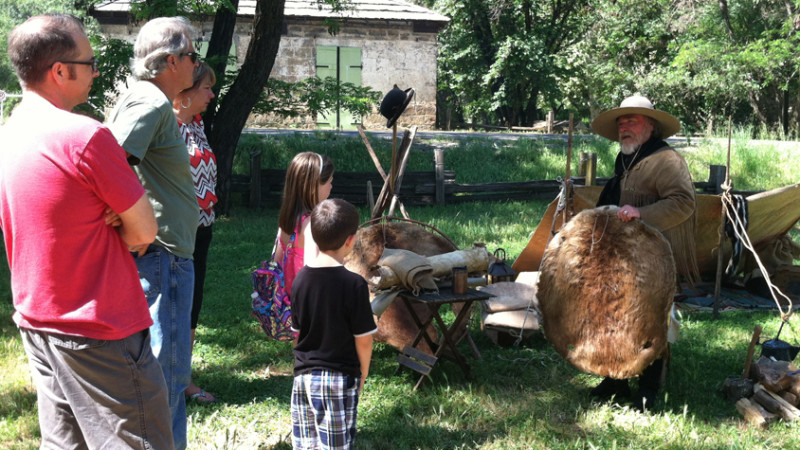
I have fond memories of taking many elementary school field trips — of touring the State Capitol, visiting the Crocker Art Museum, The Natural History Museum, Marshall Gold Discovery State Historic Park, Empire Mine, Sutter’s Fort, and more. It was so much fun, and brought to life all of the things we we reading out in textbooks and learning about in school.
Now that I have children of my own going to school in the same city I grew up in, in the same school district, I was so looking forward to my kids to having the same experiences.
I wanted them to experience a taste of our rich history, to see what it was like living during the gold rush, to see our government in action, and to learn about art history in a real art gallery. I wanted them to see the history they were learning about in school come to life, and I wanted to see them get excited about what they were learning about.
But our elementary school doesn’t do field trips.
When Natalie was in fourth grade, learning about California history and the gold rush, they didn’t visit Marshall Gold Discovery State Historic Park, Empire Mine, Gold Bug Park And Mine, or Sutter’s Fort, and they didn’t even do a mission project! Then in fifth grade, when learning about government, they didn’t visit the state capitol. Talk about disappointment.
We live just 25 minutes away from the California State capitol and are surrounded by historic sites with living history days and student programs — and our school didn’t do any of them.
I get that budgets are tight and that teachers can’t do much to change that.
But it was a hard pill to swallow, when my friends with kids at other elementary schools just a couple streets away are doing all of the field trips I was hoping my children would get to do. It appears to not be a district thing, but an individual school thing.
Parents Need To Supplement In-School Learning
At that point, my husband Brian and I made a decision. It was going to be up to us supplement our children’s education. We needed to look at school as a baseline for their education, and take the deeper learning and understanding of topics into our own hands. It is our job to take an active role in helping our children learn in a way that inspires them, to see history, to hear it, to taste it, to smell it, to touch it, and to participate in it.
So I hit up Google for the dates of upcoming living history days and tour opportunities.
Historic Sutter’s Fort
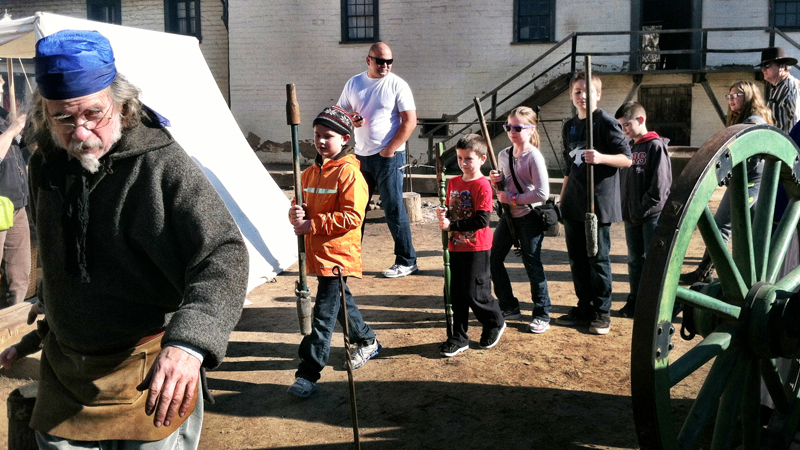
Our first adventure was visiting the California State Indian Museum and Sutter’s Fort in Sacramento for their living history day.
The kids were fascinated with the artifacts and displays in the Indian Museum, asking the docent lots of questions. And Natalie got to show off some of what she learned in school by explaining some of the displays to us.
Then we went over to Sutter’s Fort, which was alive with costumed docents in 1840s clothing engaged in 1840s activities. The kids got a worksheet to complete during their visit, and they could turn it in when complete for a prize.
- We got to climb inside a covered wagon, go inside rooms that families lived in and learn about how they lived from the docents, and get some pretty funny facts (like what a thunderpot is).
- We saw the jail and the general store, where we were entertained by the store owner, as well as the blacksmith making horsehoes.
- We saw musket demonstrations, weaving demonstrations, met trappers and examines fur pelts, tasted food made by pioneer women over the fire, and participated in the cannon firing demonstration.
Marshall Gold Discovery State Historic Park
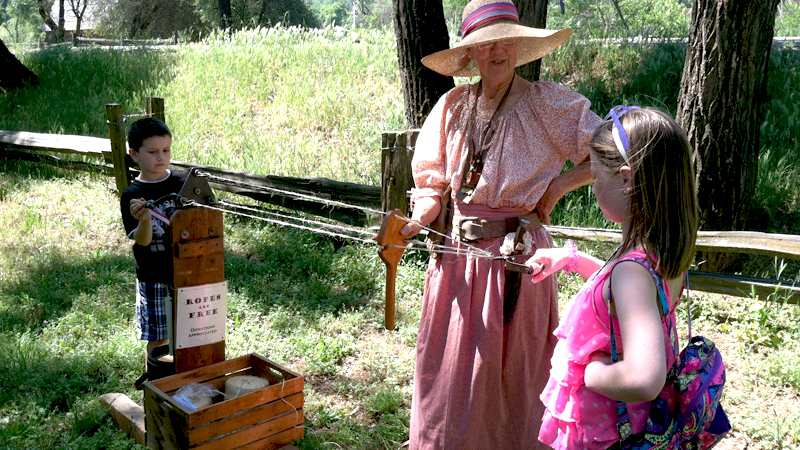
Next we went to the Marshall Gold Discovery State Historic Park in Coloma.
On the second Saturday of every month, the park fills with docents dressed in period clothing who give demonstrations of life back in the 1850s. Because Mother’s Day also fell on the second Saturday of May, we invited Grandma and Grandpa to come to the Marshall Gold Discovery State Historic Park with us and have a picnic.
- We first looked at all of the docent exhibits, participating in and learning about rope making, trapping and trading, blacksmithing, dutch oven cooking, sawmill wood working, and gold panning.
- Then we looked at a replica of the original sawmill, and toured historic buildings including houses, a school, jail ruins, and store exhibits.
- After touring the grounds, we had a picnic under the shade tress and grabbed ice cream cones from the creamery.
Empire Mine State Historic Park
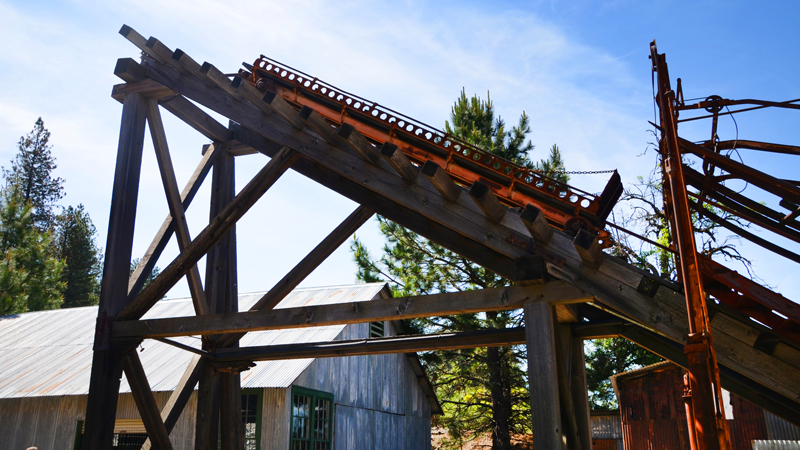
We also visited Empire Mine State Historic Park, one of the oldest, largest, deepest, longest and richest gold mines in California, for another living history day.
- We went down into a mine shaft, checked out mining tools, toured the mineyard, and saw the old stamp mill.
- We got to peek inside the Assay office, the “secret room,” the mineyard office, the machine shop, and the gold room.
- We met period costumed mining characters who shared stories with us about what it was like to live and work at Empire Mine.
Bourn Cottage At Empire Mine
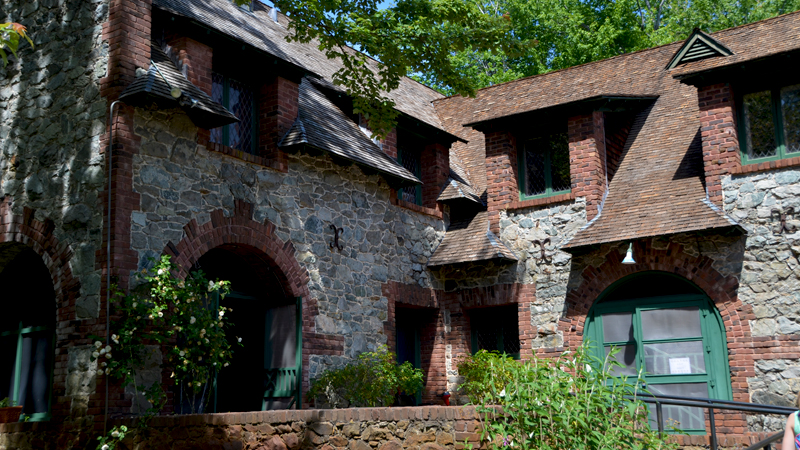
Also on the Empire Mine grounds, we were able to tour the famous, historic Bourn Cottage.
We were lucky to be there on a living history day, where docents dressed in early 1900s’ costumes portraying the Bourn Family were on hand to welcome us into their home. The kids told the docents their last name was Bourn too, and they even got special treatment!
Surrounding the Bourn Cottage are gorgeous grounds and gardens with roses, secluded paths, beautiful fountains, and a huge, open, grassy area for the kids to run around on.
It was super hot that day, so we were very happy a vendor was on hand selling ice cream too!
Old Hangtown’s Gold Bug Park and Mine
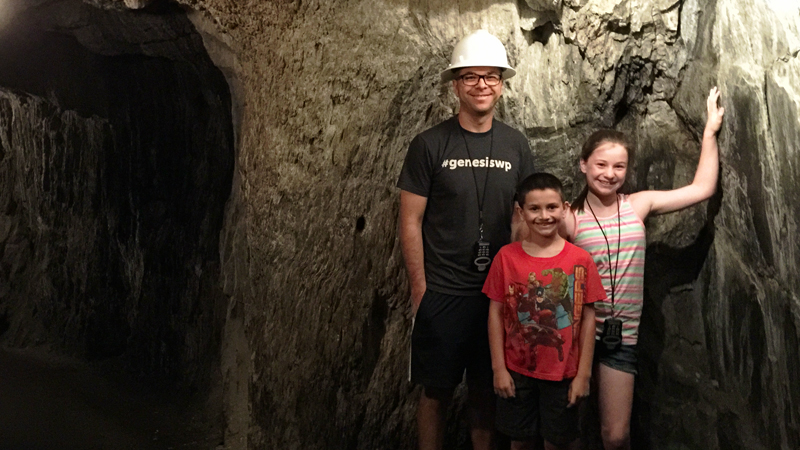
One of our most recent history adventures was a visit to the Gold Bug Park and Mine.
I actually had never heard of Gold Bug Mine until I saw an ad for it on Facebook — and because we’re always up for an adventure, we planned a visit. It was actually way cooler than we thought it would be!
We first took a self guided tour of the Gold Bug Mine, walking through a 352 foot drift of the hard rock mine. It got really cold as we got deeper into the mine, and water was dripping from the ceiling, making it a really awesome experience.
While we were there, we also visited the Priest Mine and the historic Stamp Mill for a docent story and a demonstration, and toured the working Blacksmith shop. Then we visited the gift shop to pick up some tools to do some gem panning, and we hit the gift shop again to get glass jars to hold all of the colored gems the kids found. We easily spend an hour just panning for gold and gems.
Our day wrapped up with a picnic under covered picnic area alongside the stream.
Little Effort, Big Rewards
It didn’t take much time or planning to make these history adventures happen for our family — just a bit of Googling and adding it to the family calendar. I knew the kids would have fun, but what I didn’t realize was how much Brian and I would enjoy the adventures, relearning history trivia we forgot from our school days, and being a part of their hands-on learning adventures.
If I can, with just a little effort, create some fun adventures, make some family memories, and help facilitate a love of learning in my children, I’d say we’re all reaping some big rewards.
What About You?
Do your schools take the kids on field trips? Or are you left to do it on your own time? Have you done history or educational field trips with your kids?
I’d love to hear from you!